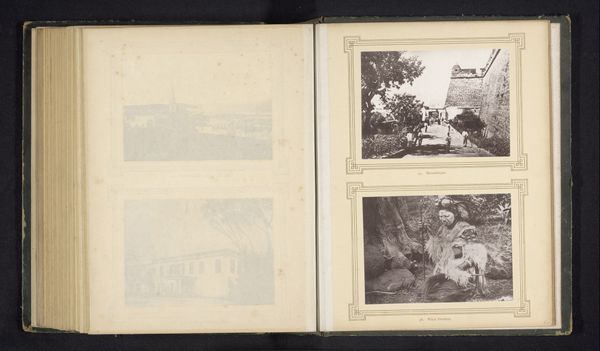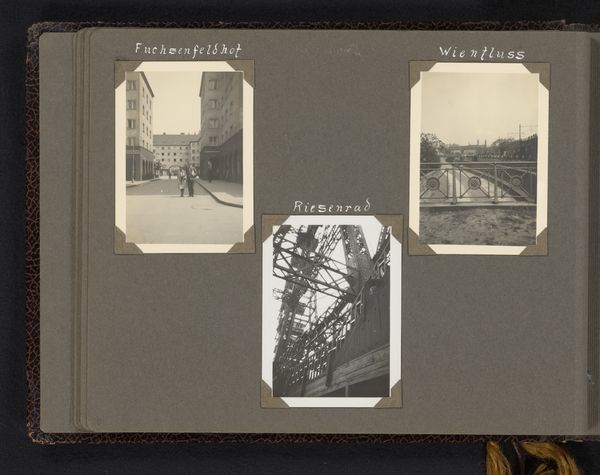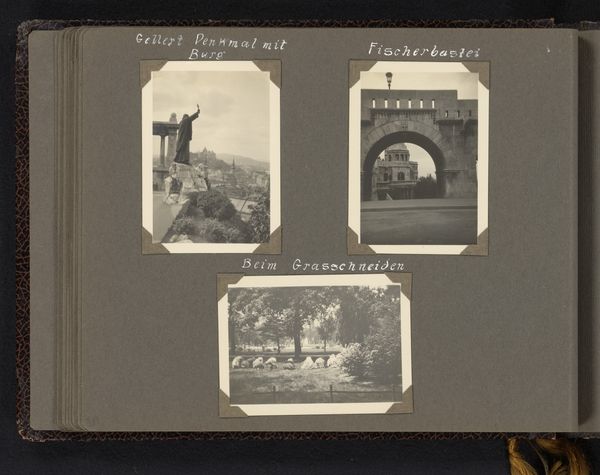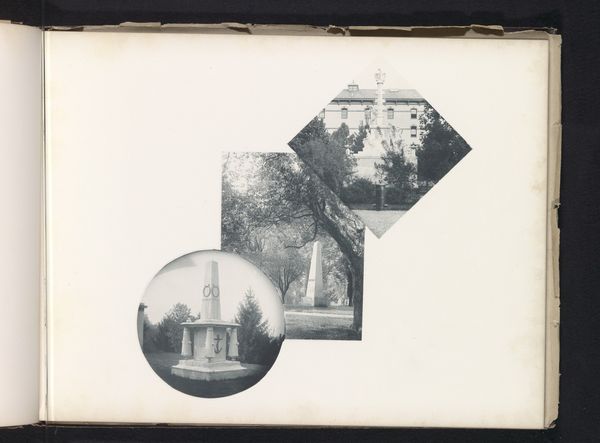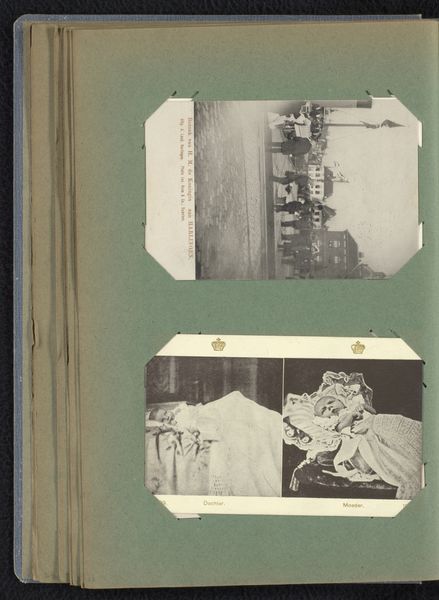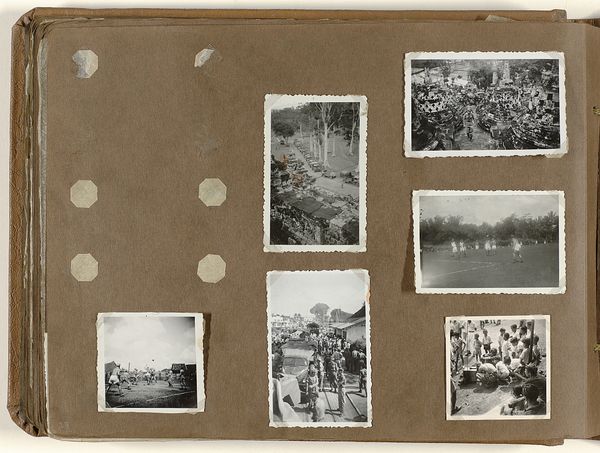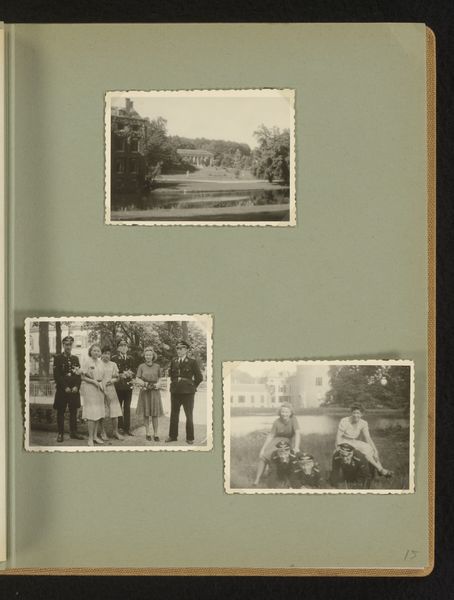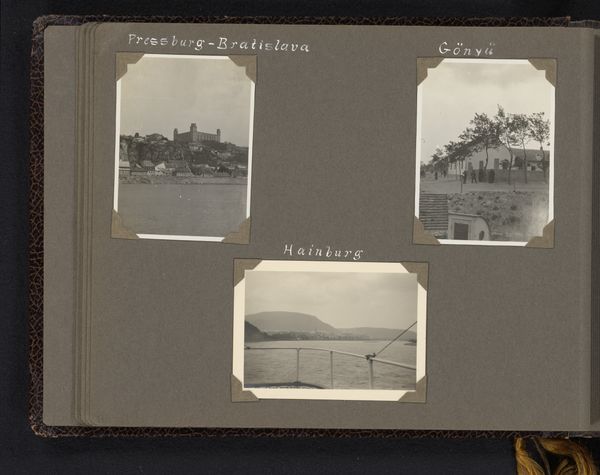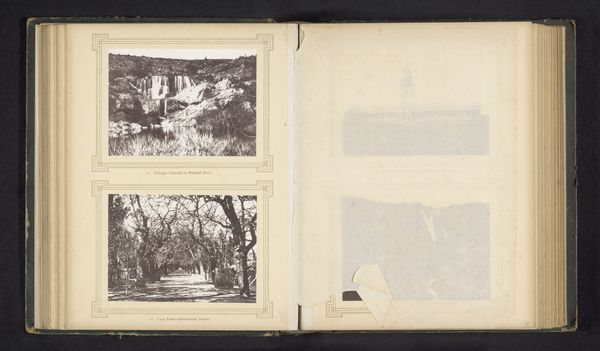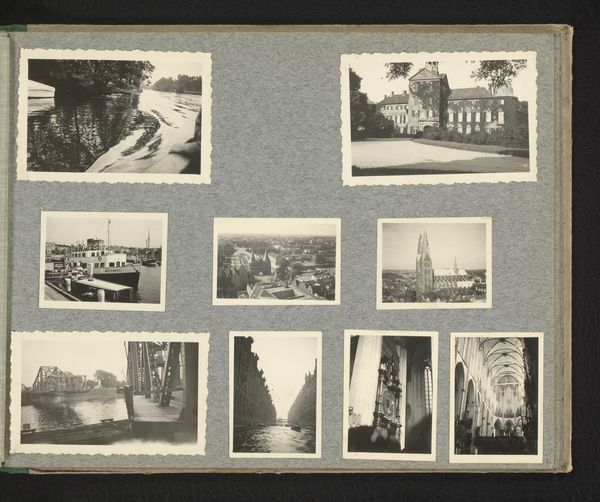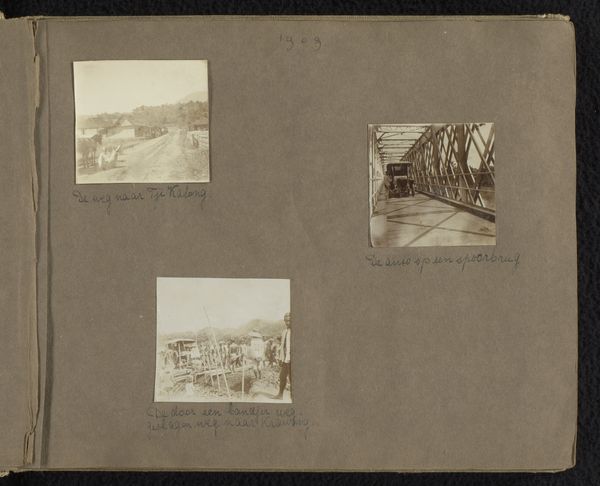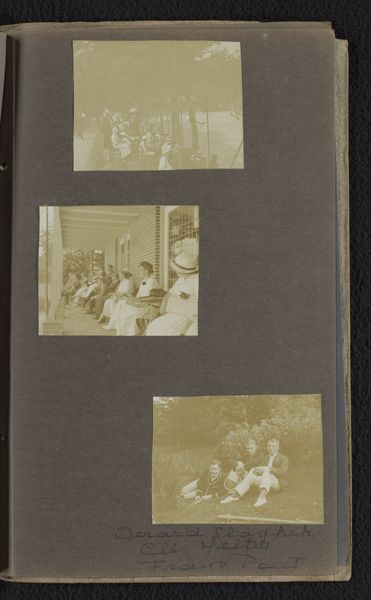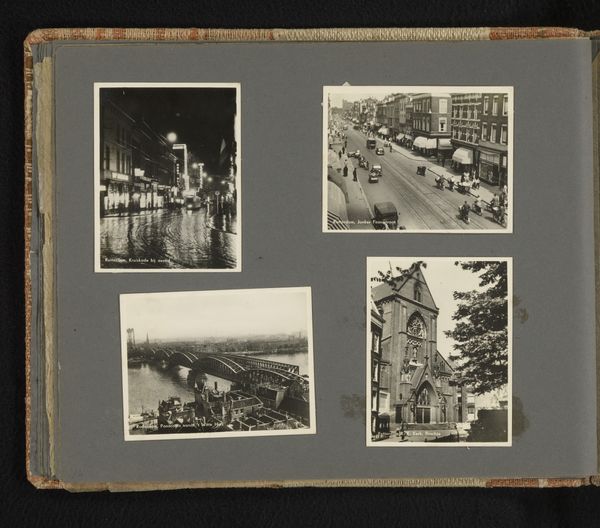
print, photography, albumen-print
# print
#
landscape
#
photography
#
cityscape
#
modernism
#
albumen-print
Dimensions: height 190 mm, width 265 mm
Copyright: Rijks Museum: Open Domain
Curator: What a fascinating archival item! This is an albumen print from between 1930 and 1931 by Berti Hoppe, titled "Verblijf in Budapest"—Residence in Budapest. Editor: It feels like a series of postcards lovingly arranged. There's a melancholy mood, even through the aged sepia tones. The sharp focus on each scene, though, gives it a certain energy. Curator: Yes, that combination is very evocative. The choice of subject—a bridge, a tower, a bastion—speaks to something, a triumvirate of stability, aspiration, and protection. It’s like a symbolic framework of city life. The bridge as connection, the tower as vision, the bastion as resilience. Editor: And a specific framing of "city life." Hoppe clearly presents an image of progress. These sites suggest a particular moment in Budapest's history, right before the storm of World War II. This makes it almost unbearable. There's a subtle romanticization, a forgetting of class disparities and growing fascist unrest under the surface of beauty. Curator: Well, the images are literally framed! Each snapshot is carefully set off from the album page by its own border, which further accentuates that removed viewpoint and speaks to a specific, perhaps consciously crafted memory of the city. A remembrance of these elements of progress as emblems of culture. Editor: I still come back to this: whose residence? This vision of Budapest clearly caters to a specific class. Who is offered a "residence" there, who isn't, and who suffers the consequences? The composition presents a sanitized narrative, a selective highlighting of landmarks without acknowledging the socio-political issues bubbling beneath the surface. Curator: Those silences themselves tell us something, I think. In the careful curation, we begin to discern not just what Hoppe shows us but what is purposefully excluded from their memory. Editor: Precisely! This album, this "residence" of memories, also makes its own argument—whether intentionally or unintentionally—for the value systems embedded within that society. Thank you. Curator: A vital consideration; a poignant view of history filtered through visual form. I learned much; thank you for your insight.
Comments
No comments
Be the first to comment and join the conversation on the ultimate creative platform.
